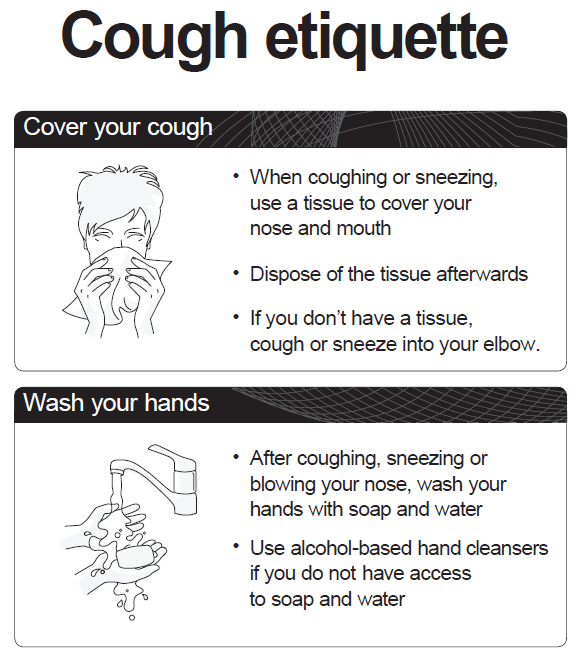Respiratory Hygiene (Cough Etiquette)
What Is It?
To prevent the transmission of all respiratory infections in healthcare settings, infection control measures should be implemented at the first point of contact with a potentially infected person. Respiratory hygiene and cough etiquette should be applied as standard infection control precautions at all times.
Covering sneezes and coughs prevents infected persons from dispersing respiratory secretions into the air.
Residents with respiratory symptoms should be encouraged to sneeze or cough into the crook of their elbow or cover their coughs and sneezes with a tissue and then put the tissue in a bin.
Hands should be washed with soap and water after coughing, sneezing, using tissues, and after contact with respiratory secretions or objects contaminated by respiratory secretions.
Residential aged care facilities should
Put signage at the entrance to aged care facilities, instructing people with acute respiratory symptoms to practice respiratory hygiene and cough etiquette and alert employees to symptoms.
Ensure availability of hand hygiene information, alcohol-based hand rub/sanitiser, tissues, and masks in common areas and areas used to evaluate patients with respiratory illnesses.
Place residents with acute respiratory symptoms at least 1 metre away from others in common waiting areas or in a single room (if available). Ask the resident to wear a mask until they can be moved to a single room.

Communicable Diseases (2014) NSW Health